After reading the back and forth regarding the La Sportiva Kilo and Skorpius CR II (and 1st iteration Skorpius)…it’s time for a closer look. I suppose the first item up for debate, or to at least ground truth, is weights. The two boots, perhaps designed as a means for different ends, are similar in weight.
The two Kilos with stock liners and footbeds weigh a nearly identical 1134g in size 27.5. Although I’ve weight measurements for Skorpius range above and below the 1200g threshold, the 27.5s I’ve been messing with bump above 1200g.

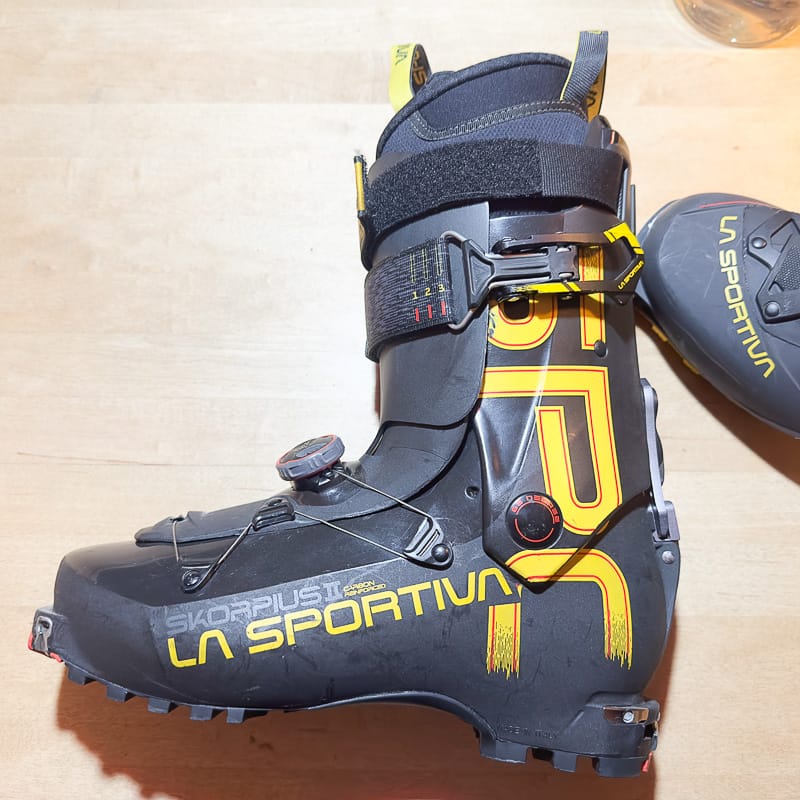
One Skorpius CR II weighs 1224g, the other 1214g. Yup, the weight bump to the Skorpius is nominal; however, it is noticeable on the feet. If you are a devoted Skorpius fan, of which we know there are many, this doesn’t mean go out and buy the Kilo, or, if you love the Kilo, purchase a Skorpius. A good ole’ Venn diagram illustrates the point: there’s some functional overlap in the middle between these two boots, but they are also tools with different applications.
Some have asked why La Sportiva released two boots so close in weight that, on paper, may serve the same function. We don’t have an answer for you, other than what’s mentioned above, that some may see these boots as different slippers cut from the same cloth. Oh…, and maybe La Sportiva saw a niche to fill in their bootline.
The Skorpius CR II liner weighs 262g, while the Kilo liner weighs 270g—a nominal difference. Perhaps the slight bump in weight comes from the plastic “stiffeners” on the Kilo liner’s tongue and upper calf zones. What seems clear is that adding plastic to the Kilo liners contributes to the Kilo’s overall stiffness. (The liners feel similar overall, with a slight nod, a hardly perceptible nod, to the Kilo liner for greater ROM.)
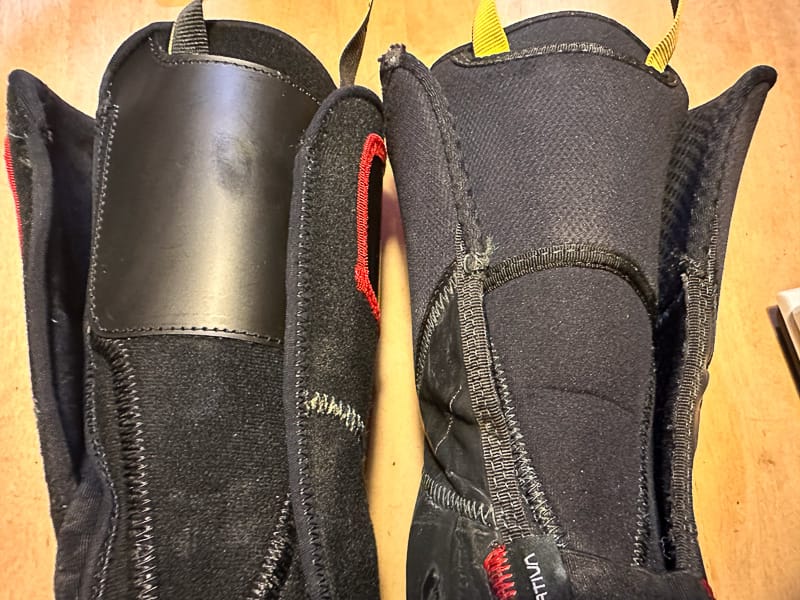
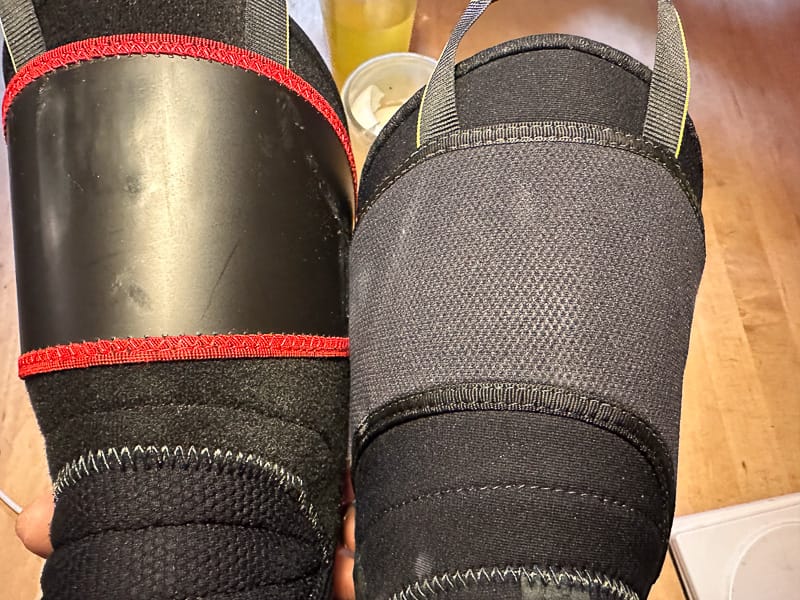
As a lighter boot, it’s also obvious that the designers subtracted material from the Kilo shell compared to the Skorpius CR II. The Skorpius retains a Pebax tongue, while the Kilo is tongueless. The Skorpius tongue runs the length of the instep/forefoot toward the toes, providing more material for greater stiffness and a platform to house the BOA system. The Kilo cuts weight, and some stiffness, as the shell’s forefoot zone features a U-shaped cutout.
Without bringing out the digital calipers and trusting the eyes, the Kilo shell looks a smidge wider when glancing at the toe box and the boot’s backsides. This is not to say that the Kilo shell is heavier; it is not. The Kilo shell sans liner weighs 894g. The Skorpius shell bumps up marginally to 956g. And overall, for me, the Skorpius’ fit is more generous. To allow the BOA to cinch down on my foot, I need an aftermarket footbed and a few millimeters of volume reduction further in the footbed, to secure my foot. Although looking at the THR comments, it looks like the fit works for some with low-volume feet. With the Kilo, I like the fit with the simple stock footbeds—which are nothing special—but the fit seems to work with my foot.
The boots feature different ski/walk mechanisms, too. Both work as designed. (As readers have noted, the Kilo adds the desired aspect of replaceable fixtures—something many would like to see on later Skorpius iterations.)
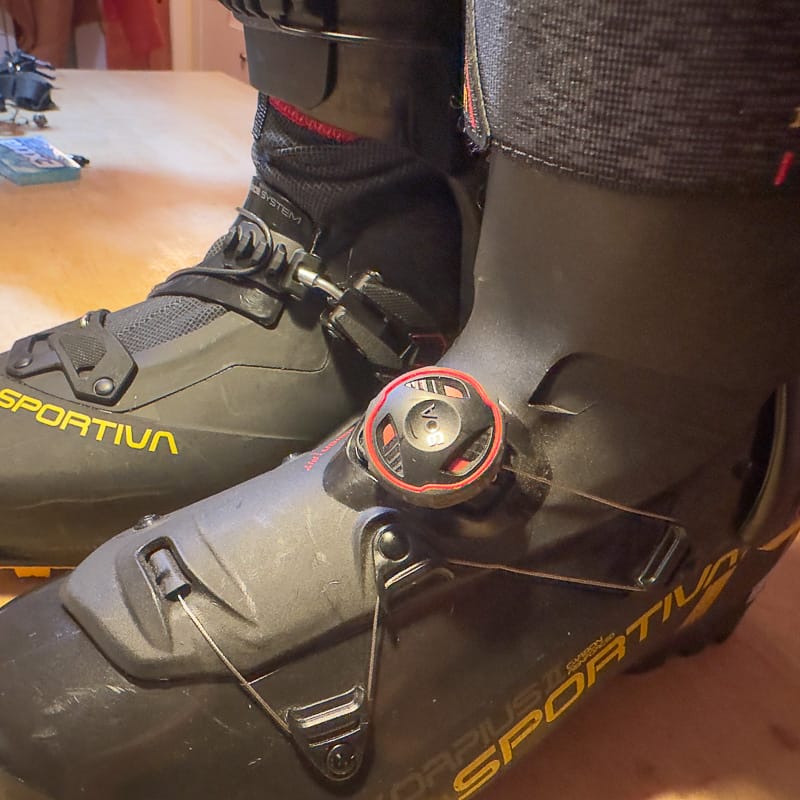
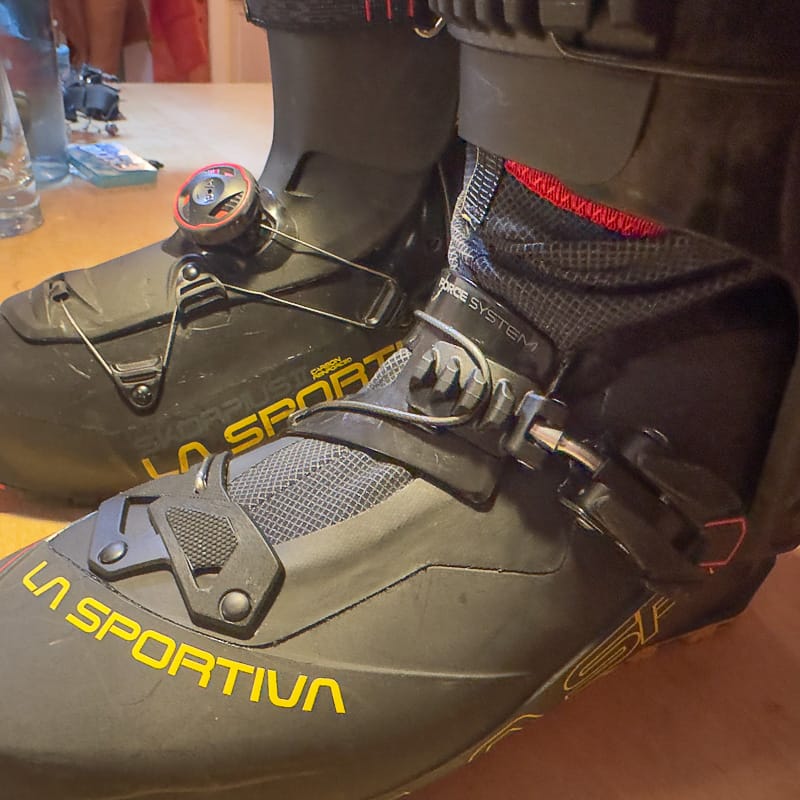
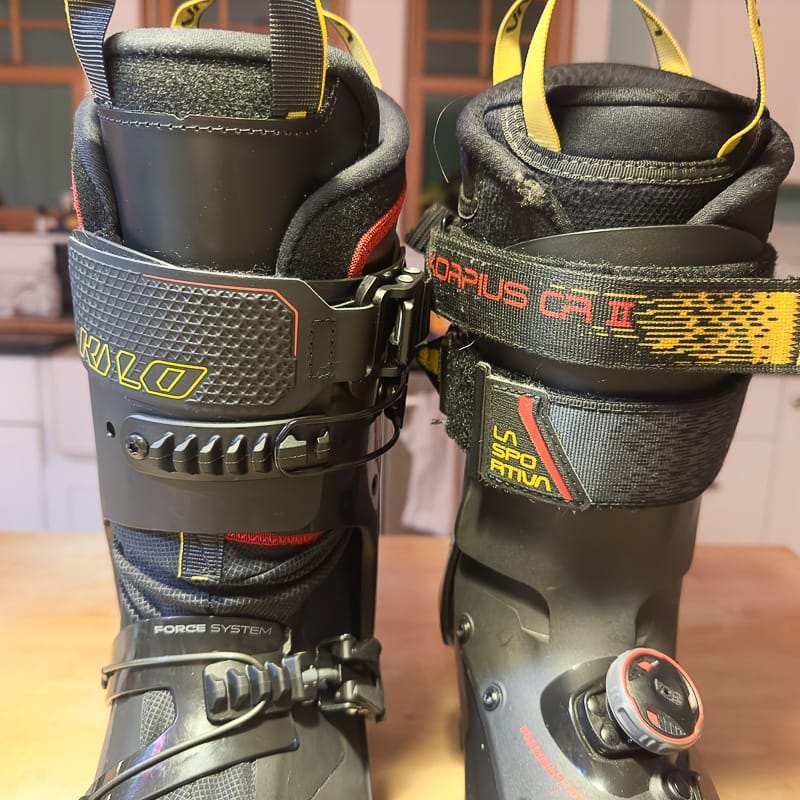
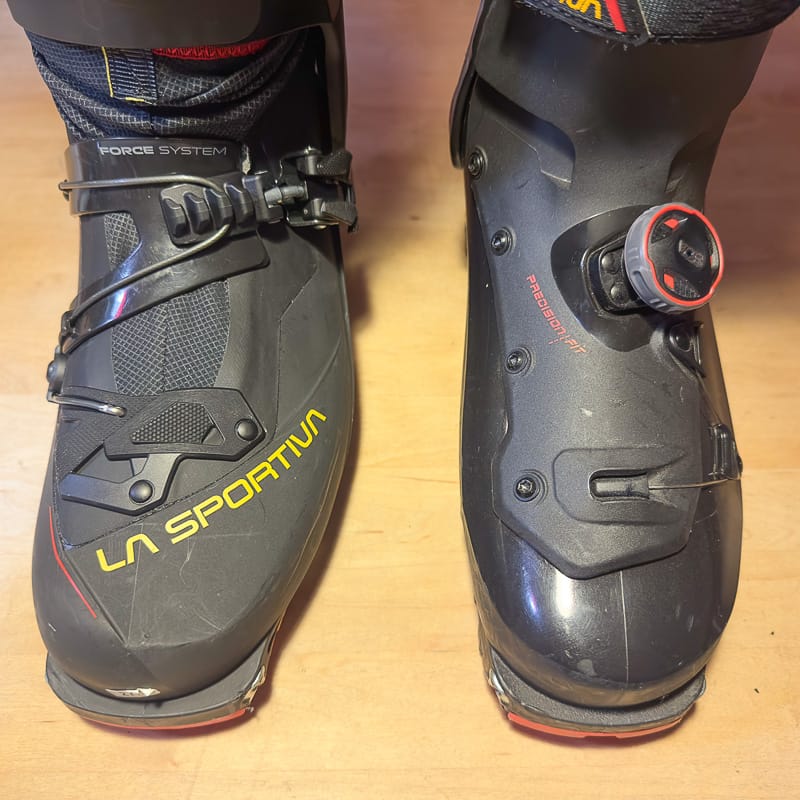
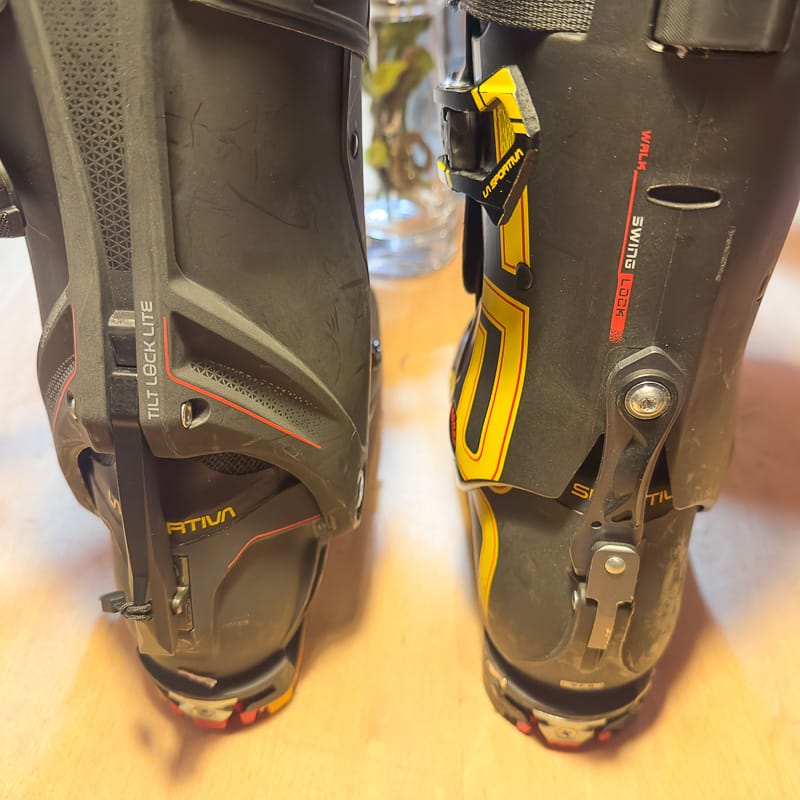
La Sportiva offers a great boot in the Skorpius. The ROM, kind-friction, and relative stiffness make this boot a go-to for many seeking a lighter boot that can drive a bigger/heavier/longer ski, not just a short ski-mountaineering plank. But there are compromises. It’s close, but truly aggressive skiers might want something just a bit stiffer—with likely more buckles, which makes the whole package heavier overall. La Sportiva deserves huge kudos for showing how to build a stiff and confident boot that is so weight-conscious.
The Kilo, on the other hand, does offer superior ROM and friction. Compared to the Kilo, the Skorpius’ ROM/friction limitations are more noticeable (at least to me) when striding forward and less so when opening up my ankle.
Ok, that’s a lot of dissecting the nuances between these two boots. Furthermore, this is not to side either Skorpius or Kilo. It is to allow us all to make more informed decisions before heading into the local shop or clicking the “buy” button. As someone who tours from the first few snowfalls until it all peters out here in the PNW, which is often June or July, I like the options La Sportiva is putting forward.
The bottom line is there are gains with opting for the Kilo, and some compromises, too. The same can be said for the Skorpius. I suppose it depends on what you are trying to optimize for.

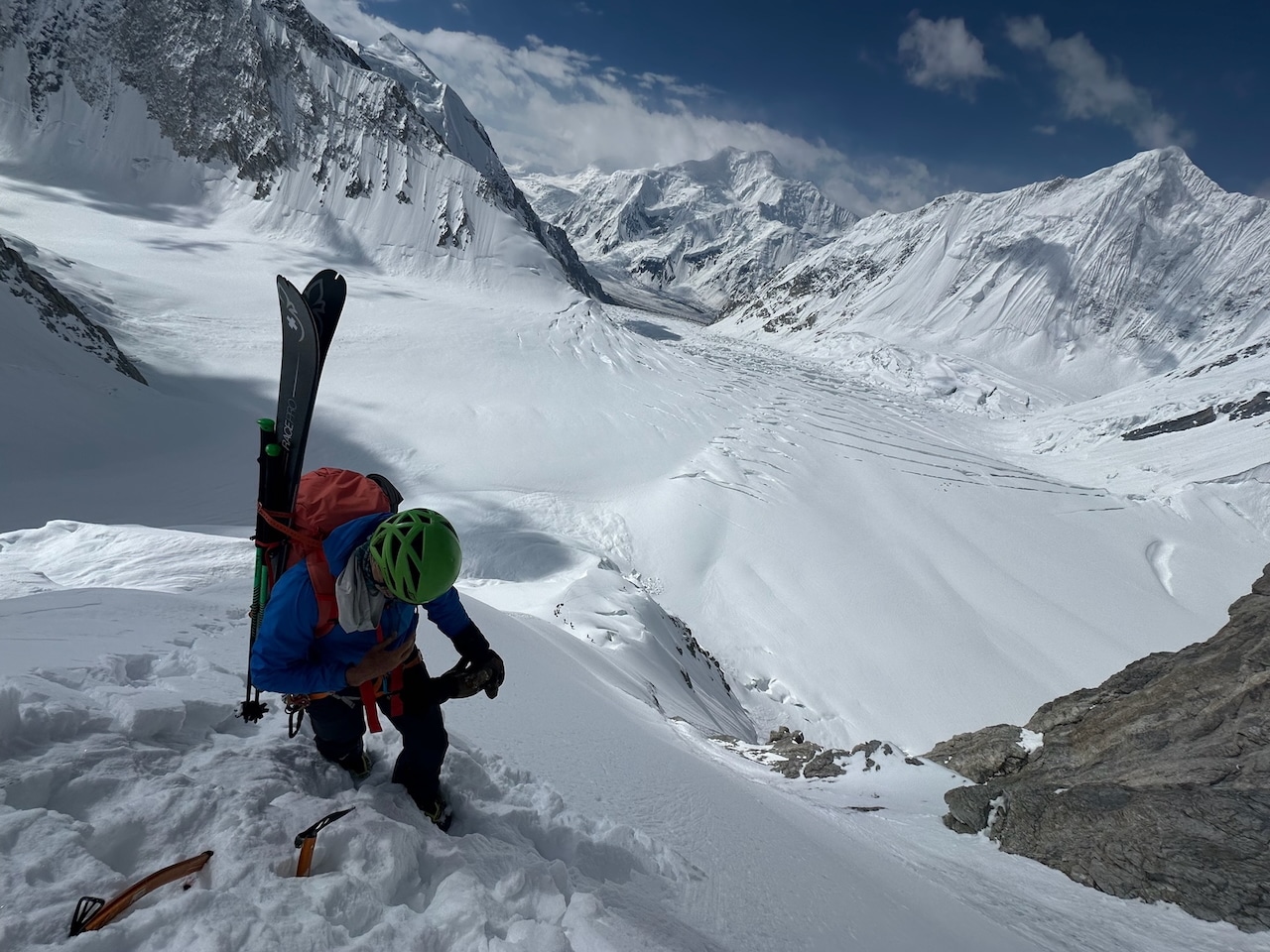
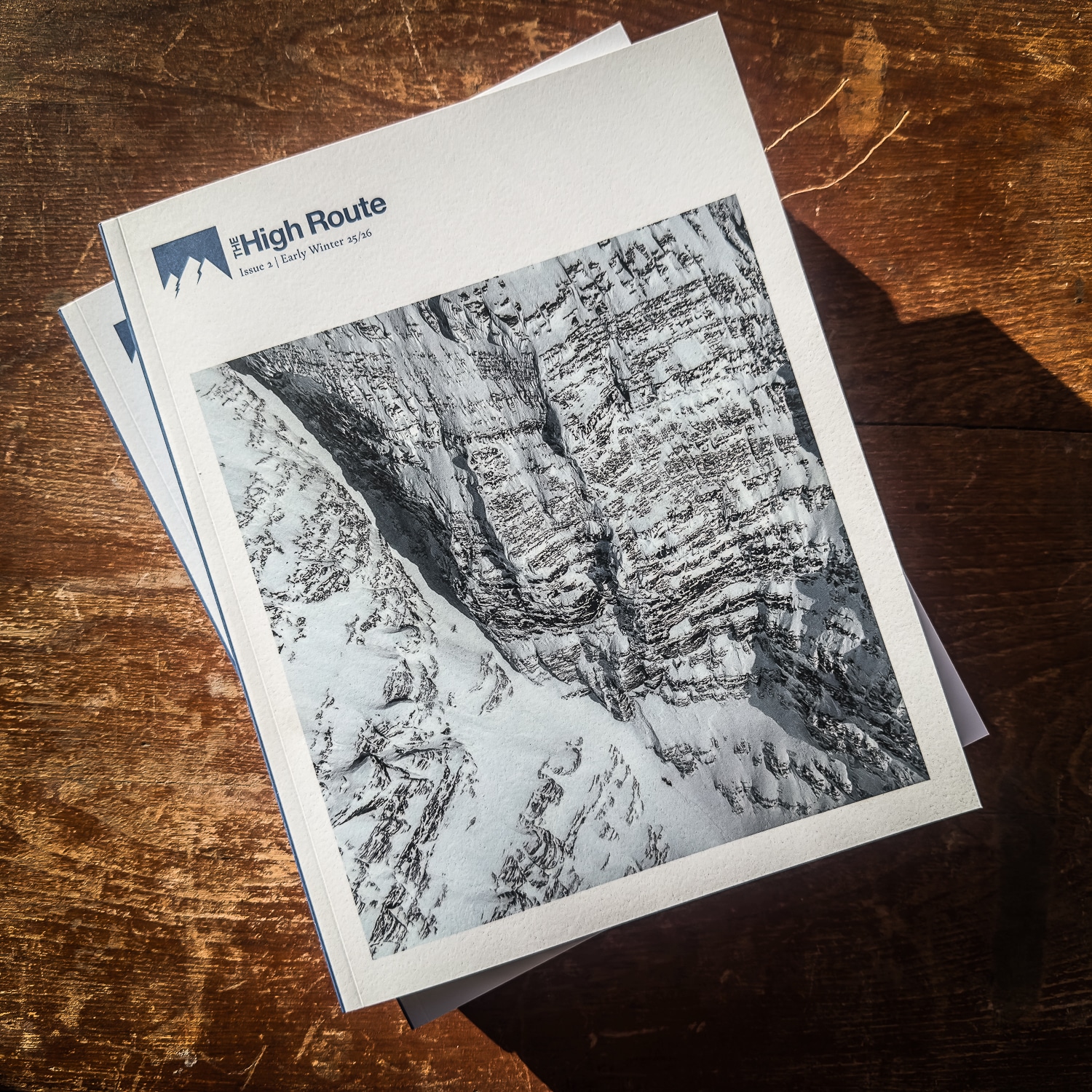


Leave a Reply
You must be logged in to post a comment.